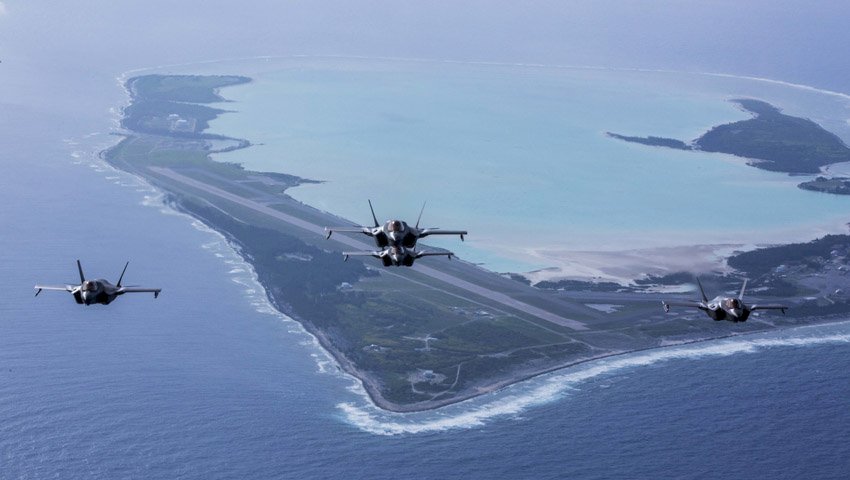
The US Marine Corps has formally re-designated Marine All Weather Fighter Attack Squadron 242 to Marine Fighter Attack Squadron 242 as part of the Marine Corps’ ongoing transition process from legacy F/A-18 Hornet aircraft to the newer fifth-generation F-35B Lightning II.
This transition is in accordance with mutual agreements between the US and the government of Japan, and occurred on schedule per the annual Marine Corps aviation plan.
The F-35 represents the future of Marine Corps tactical aviation and will eventually replace the AV-8B Harrier, the F/A-18 Hornet, and the EA-6B Prowler in all units across the Marine Corps. Marine Aircraft Group 12 received the first forward-stationed F-35B squadron in January 2017 when VMFA-121 was relocated to Marine Corps Air Station Iwakuni, Japan. With the addition of VMFA-242, MAG-12 is now the only overseas unit with two permanently stationed F-35B squadrons.
Brigadier General Chris McPhillips, the commanding general of 1st Marine Aircraft Wing based in Okinawa, explained, “The increased capability of F-35B along with our other fifth-generation capabilities in III MEF enable us to support Fleet Marines, Joint and allied partners on a moment’s notice.
“F-35B gives us the ability to dominate air and sea space and persist wherever we are without rival. It is an expeditionary platform that literally holds doors open for the Fleet Marine and Joint Force. F-35B basing in Japan is not by accident, it has occurred here more rapidly than in other parts of world which is a testament to our commitment to Japan and the region.”
The F-35B is the “next-generation” aircraft and represents the future of USMC tactical aviation. In addition to its short take-off and vertical landing capability, the F-35B provides advanced technology and incorporates the mission capabilities of the current USMC platforms — the AV-8B and F/A-18 — within a single airframe.
The F-35B also has new and different capabilities compared with the legacy aircraft it replaces.
The F-35B short take-off/vertical landing (STOVL) variant is the world’s first supersonic STOVL stealth aircraft. It is designed to operate from austere bases and a range of air-capable ships near front-line combat zones. It can also take off and land conventionally from longer runways on major bases. The US Marine Corps’ F-35B aircraft reached initial operational capability (IOC) on 31 July 2015 and, as of January 2017, a squadron of F-35Bs is permanently based at MCAS Iwakuni.
The F-35B STOVL operation is made possible through the Rolls-Royce patented shaft-driven LiftFan propulsion system and an engine that can swivel 90 degrees when in STOVL mode. Because of the LiftFan, the STOVL variant has a smaller internal weapon bay and less internal fuel capacity than the F-35A. It uses the probe-and-drogue method of aerial refuelling.
F-35B aircraft have been delivered to the US Marines and the UK. US STOVL aircraft are stationed at the first operational F-35B base, Marine Corps Air Station Yuma, Arizona, and Marine Corps Air Station Beaufort, South Carolina, where F-35B training is taking place. The first UK F-35Bs are located at RAF 17 Squadron, Edwards AFB, California, where operational testing is being conducted. The Italian Air Force will also operate the F-35B.
Written by Stephen Kuper.












